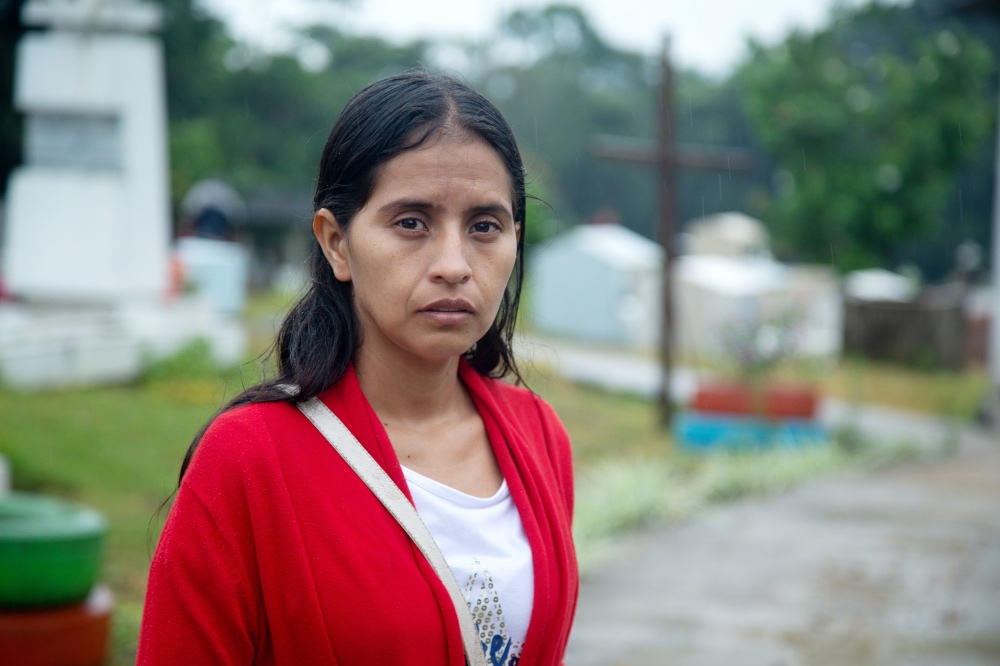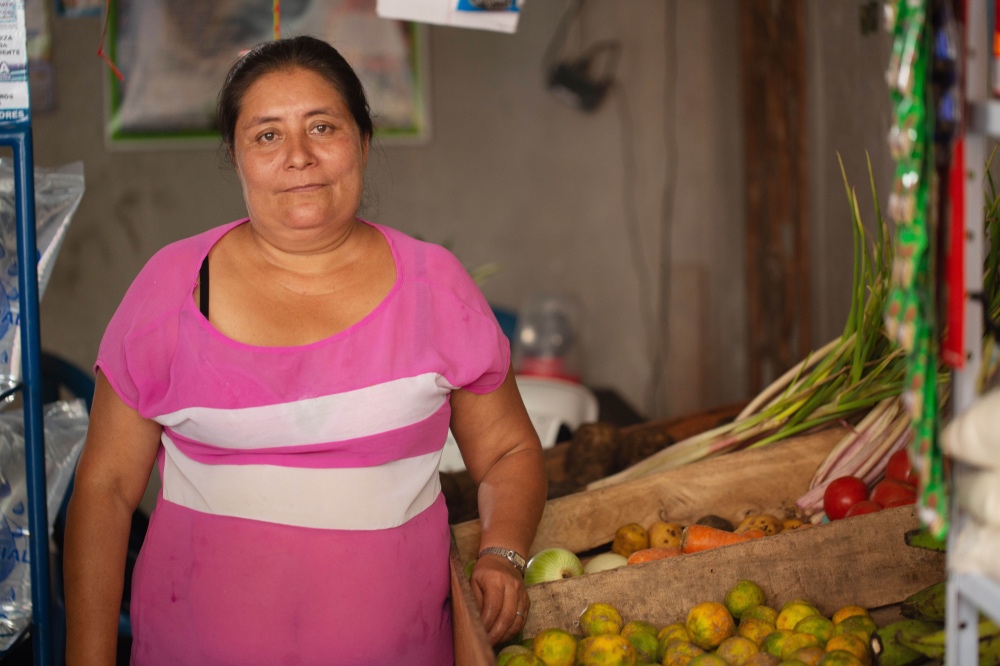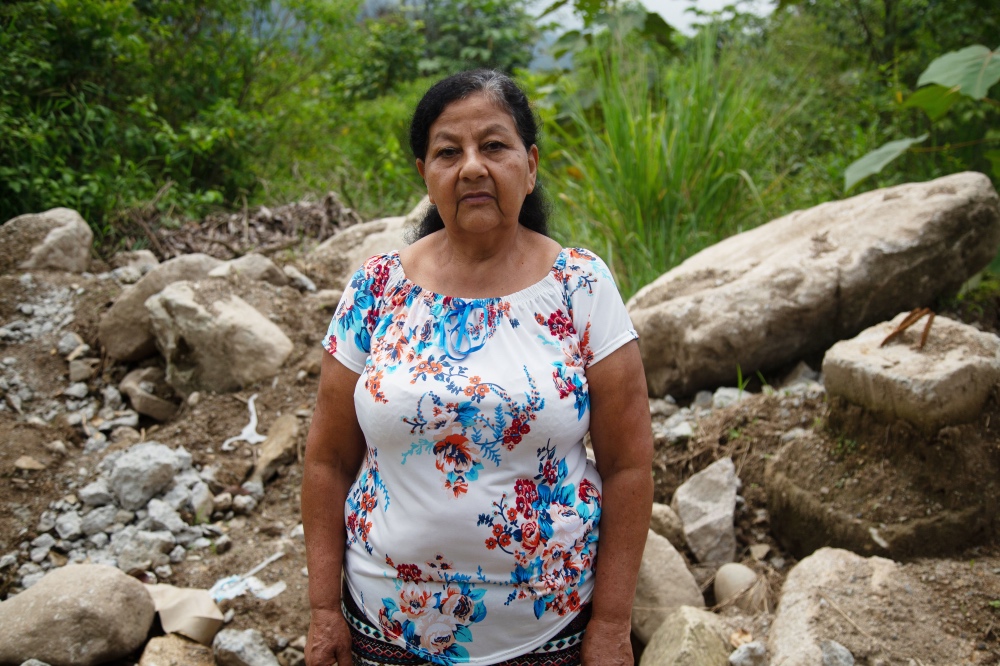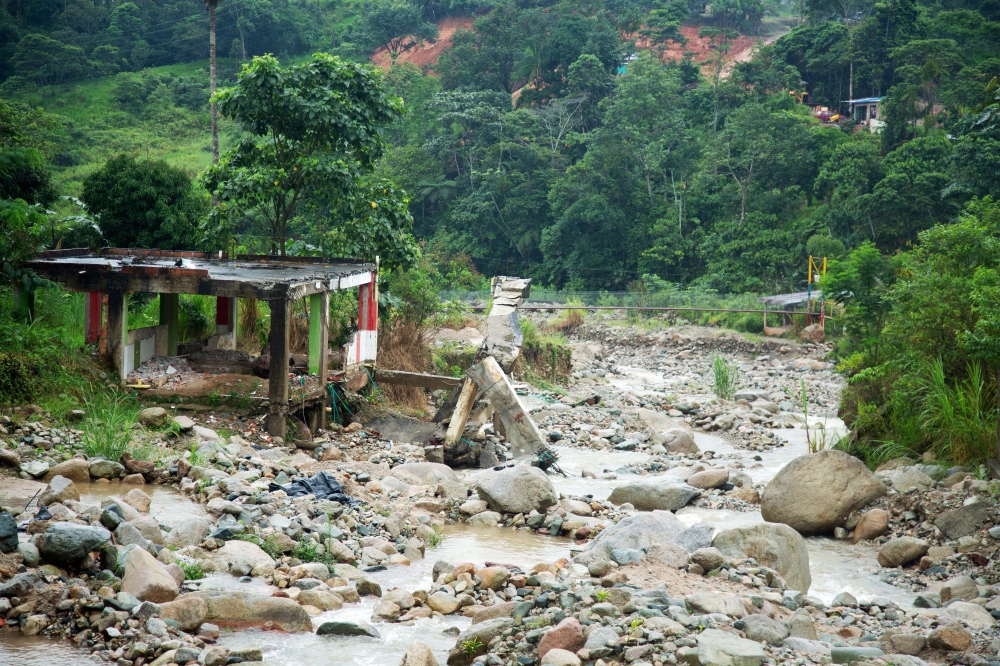
ANASTASIA MOLONEY, of Thomson Reuters Foundation, reports from Colombia on the struggle people are facing as they try to rebuild disrupted lives…
Mocoa, Colombia
Thomson Reuters Foundation
Luz Alba Ortiz sobbed, her head in her hands, as she recalled the day her parents were washed away in a deluge of mud that hit the Colombian rainforest town of Mocoa two years ago.
Mudslides triggered by torrential rains in March, 2017, killed more than 300 people and left hundreds missing in Mocoa.
Community leaders put the combined toll of the dead and missing, many of them children, at around 1,000, in the worst disaster to hit Colombia in recent decades.
Ortiz, now 28, lost both parents, her sister, baby niece and brother-in-law in the disaster, while she and her daughter narrowly escaped the neck-high torrent of mud and rocks, clinging to shelter on higher ground.
“There was nothing more do to than hug each other, pray, and ask God for forgiveness,” said Ortiz, standing next to the rubble of her family home that was destroyed in the disaster.

Landslide survivor Luz Alba Ortiz at a cemetery in Mocoa, Colombia, on 28th March. PICTURE: THOMSON REUTERS FOUNDATION/Theo Hessing
For Ortiz, and many other families living in Mocoa, the horrific mudslide was only the latest in a string of losses in a country riven by both armed conflict and worsening weather disasters.
Ortiz’s family fled to Mocoa in 2002 after leaving a nearby rural area where guerilla violence was making life too risky.
“There was nothing more do to than hug each other, pray, and ask God for forgiveness.”
– Luz Alba Ortiz, speaking of when her home and much of her family was lost in a landslide in 2017.
But with little cash to restart their lives, they settled in an area with new risks – this time from heavy rain and mudslides linked to climate change.
Around the world, many families are facing the same pressures, fleeing one crisis only to find themselves facing a different one, researchers say.
Ortiz now lives in one of 300 new homes constructed for property owners who lost theirs in the disaster – part of a larger rebuilding effort in Mocoa, the rainy and humid capital of Colombia’s southern province of Putumayo, in the Amazon basin.
But two years after the disaster, the town’s mayor, Jose Antonio Castro, says roughly half of Mocoa’s 40,000 people still live in areas that are at risk of flooding and mudslides, while new flood prevention measures have yet to be built.
“We are only just starting to recover a little, which in this case means giving houses to the victims who suffered in the tragedy and lost their families and their possessions,” Castro told the Thomson Reuters Foundation.
Surrounded by mountainous rainforest and with six rivers running through and around it, Mocoa’s topography and location make it prone to mudslides and flash floods.
Many residents fear more mudslides could come in the future as rains become more severe and frequent due to climate change.

Landslide survivor Carmen Ligia Ortega in Mocoa, Colombia, on 26th March. PICTURE: THOMSON REUTERS FOUNDATION/Theo Hessing
Most vulnerable are those who were forced to escape violence during the country’s five-decade civil war with rebels of the Revolutionary Armed Forces of Colombia (FARC). The conflict with FARC guerrillas ended in 2016.
About three in every five people living in Mocoa were forcibly displaced by the conflict, according to the mayor.
Over the decades, entire neighbourhoods and informal settlements have been founded by poor displaced families looking for refuge, often building precarious wooden shacks along river banks and on flood-prone areas.
“As they fled the war, they found very cheap lots and sites in areas right next to the river. And now they are victims of natural disasters,” Castro said.
About 25,000 Mocoa residents do not live in safe areas, and moving them away from flood plains will take about 20 years and need to be carried out in phases, according to the mayor.
“As they fled the war, they found very cheap lots and sites in areas right next to the river. And now they are victims of natural disasters.”
– Jose Antonio Castro, Mayor of Mocoa.
But funds needed from the national government to buy the land for resettling people and to build new homes have not yet been secured, the mayor said.
“It’s a very complex task” – and one that also involves persuading people to agree to leave their current homes “because the historical tradition here is to live alongside the rivers”, Castro said.
According to the mayor, work to build another 1,150 new houses in and around Mocoa is set to start soon, mostly to assist homeowners who lost their property in the disaster.
But while the area has a handful of repaired roads and bridges, new flood control measures – such as retention walls along river banks – remain almost non-existent.
“We’re only just starting to recover a little .. in terms of rebuilding the city,” Castro said.
The first of 56 planned infrastructure projects to help prevent flooding and rivers bursting their banks will start soon, the mayor said, with funding mostly from local government.
The need to move people away from harm’s way is ever more urgent as climate change takes its toll on a town that seems to suffer ever more torrential rains each year.

Landslide survivor Flor de Maria Rodriguez in Mocoa, Colombia, 27th March. PICTURE: THOMSON REUTERS FOUNDATION/Theo Hessing
On the night of the disaster, Mocoa saw one month of rain in just two hours.
Colombia’s then president, Juan Manuel Santos, blamed the mudslides caused by heavy rains, “as a direct product of climate change”.
Mayor Castro said climate change is having an impact on rivers and water sources in Mocoa and across Colombia.
“Climate change doesn’t just affect ice thawing in the [Arctic] poles and coastal flooding,” Castro said. “It has also affected the riverbeds of the Colombian Amazon.”
Across Colombia, the mountainous landscape and frequent informal construction of homes combine to make landslides a common occurrence, especially during the rainy season that normally starts in March and carries on until May.
So far this year, landslides triggered by heavy rains have claimed the lives of about 30 people across Colombia and have disrupted the lives of more than 1,500 people.
In Mocoa, there is tangible fear among residents who worry a fresh disaster could strike.
“Every time it rains, I’m afraid. I can’t sleep and I keep a close eye on the river levels,” said 62-year-old Flor de Maria Rodriguez, who lost her husband and home in the mudslide.
Despite slow rebuilding efforts, officials say communities are now better prepared in the event of another disaster.
Improved early warning systems include the construction of 17 new towers with sirens and loudspeakers that alert communities when to evacuate. Alerts are also sent to residents on WhatsApp.
In addition, about 11 digital sensors on bridges and four new weather stations monitor river and rain levels.

Houses destroyed in 2017 landslide alongside river running through the town of Mocoa, Colombia, on 29th March. PICTURE: THOMSON REUTERS FOUNDATION/Theo Hessing
“We have to live forever with the early warning systems,” Castro said. “People are now paying a lot of attention to reports when there are heavy rains.”
The systems were put to the test last August. Torrential rains triggered a red alert, prompting 30,000 people to evacuate to safety.
“The tragedy in 2017 caught us off guard,” said Jose Alfonso Cruz, who heads Mocoa’s volunteer firefighter service.
“The fact that there was no loss of life during the last evacuation in August shows we’re better prepared, that people know what to do and follow instructions. Lessons have been learned.”
For Sandra Gonzalez, 24, whose riverside house was washed away in the mudslide, being better prepared is of little comfort.
Gonzalez, and thousands of others who lost their homes in the disaster, are still struggling to rebuild their lives and pay rent.
She lives in one of the few houses still standing following the disaster in a seedy riverside neighbourhood in downtown Mocoa that is also home to crack addicts.
Beside the house, a big placard says: “Don’t return. Put your life first.”
But “I can’t afford to live elsewhere. I don’t have a choice but to live here,” Gonzalez said.
“I’m at risk. Mocoa is at risk.”





